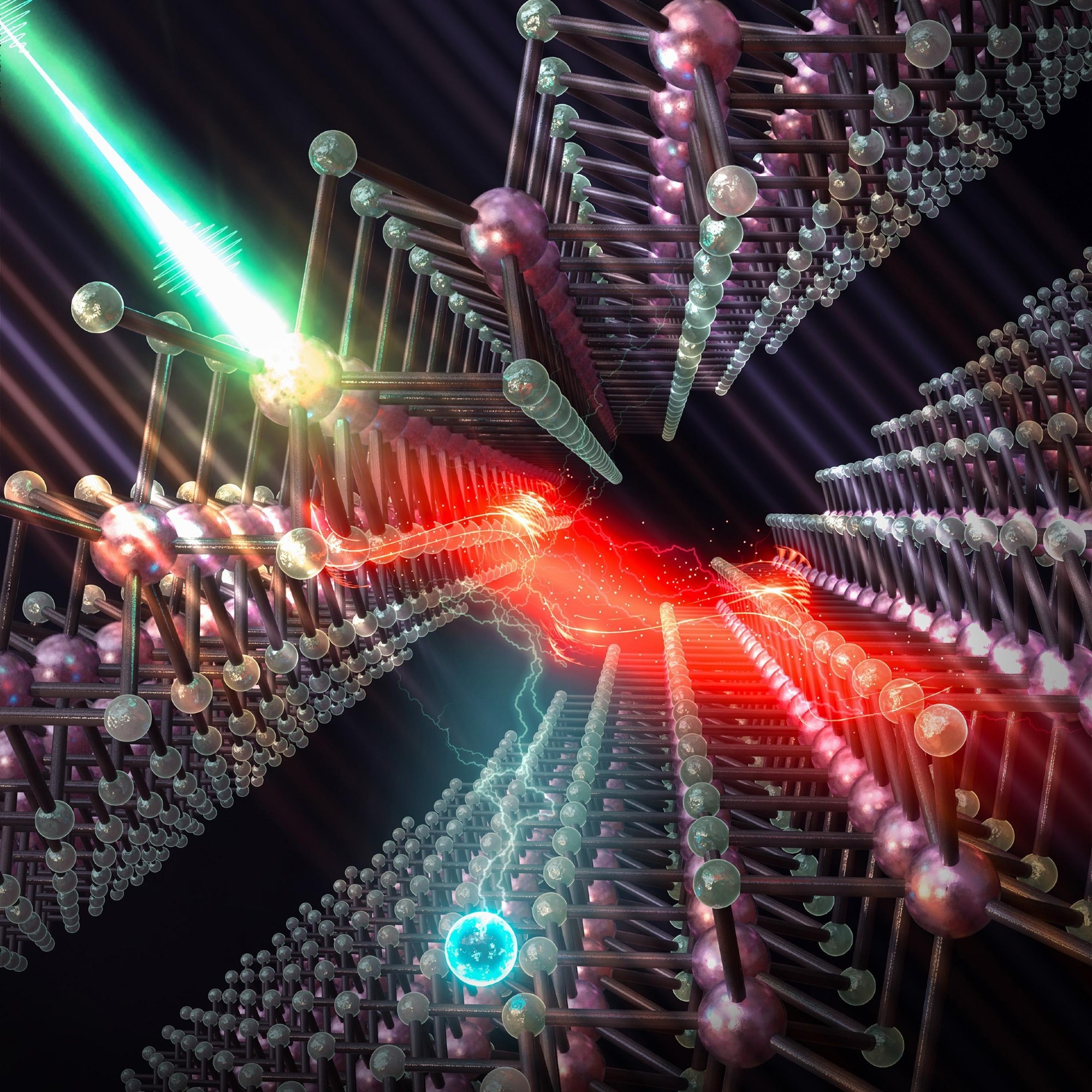EPFL engineers have figured out a way to regulate the interactions between excitons—quasiparticles that might one day transport data and substitute the electrons in electronic devices. The engineers’ approach involves applying an electric field to a two-dimensional (2D) semiconducting material.

Artistic representation of a hybrid exciton, generated in a bilayer 2D material and controlled by an electric field. Image Credit: © LANES
In modern society, electronic devices have become vital in all aspects. However, because of the increasing internet use (in part), they are moving up against their limits regarding miniaturization and processing speed.
They also consume more energy in storing and transporting information, leaving some of that energy as they go. Investigators, including EPFL engineers, have been researching for years to get over these obstacles by studying excitons and their behavior in 2D materials.
Excitons are composed of an electron (which has a negative charge) and a hole (which has a positive charge). Excitons hold the key to the next generation of electronic devices, devices that are smaller in size and faster with much less power loss.
With excitons, which would either work with electrons or replace them, it is light rather than electricity that transmits data and performs calculations.
Light is already used in fiber optics. Although light is widely used to transport information, light-based computing systems have been hindered by materials limitations and scalability issues.
Fedele Tagarelli, PhD Student, Laboratory of Nanoscale Electronics and Structures, École polytechnique fédérale de Lausanne
Fedele Tagarelli was guided by Prof. Andras Kis.
Excitons, unlike electrons, could cause much less heating when moving through a material and work very well with light. But to leverage their full potential, we need to be able to understand and control how they’re generated and interact with each other, along with their speed and life span. All this is still in the research stage.
Edoardo Lopriore, PhD Student, Laboratory of Nanoscale Electronics and Structures, École polytechnique fédérale de Lausanne
Excitons can attain a superfluid state under optimal conditions. This indicates that they can travel without resistance or energy, thus no power loss.
Repulsive Force
Investigators at LANES, along with co-workers from the University of Marburg in Germany and the National Institute for Materials Science in Japan, researched particularly on a major property of excitons—the repulsive force between them. Researchers designed a testing system that contained different layers of varied materials.
The top and bottom layers were composed of metal. The middle section had an insulating material and layers of a semiconducting 2D material, here tungsten diselenide (WSe2), placed on top of each other and connected by Van der Waals forces.
2D materials are extremely thin, with just a single layer of atoms.
“They have completely different properties from 3D materials and let us explore new physics phenomena,” added Tagarelli.
The engineers discovered they could regulate the excitons’ repulsive interactions by applying an electric field to their device.
As far as we know, this is the first time such control has been demonstrated, or at least in such a simple way. We’ve discovered a new method for controlling interactions between hybrid excitons, which can provide a unique opportunity for studies in condensed matter physics.
Fedele Tagarelli, PhD Student, Laboratory of Nanoscale Electronics and Structures, École polytechnique fédérale de Lausanne
LANES engineers successfully controlled excitons' life span and movements in an earlier study.
For the approach to work, the excitons should not be subjected directly to an electric current but should be able to “sense” an electric field. The outer metal layers and inner insulating layer protects the semiconducting 2D material. The investigations were performed at 4 Kelvin, an extremely low temperature.
“This discovery further expands our toolkit for controlling excitons so that they can one day be used to process data in a more environmentally responsible way,” notes Kis.
Journal Reference
Tagarelli, F., et al. (2023). Electrical control of hybrid exciton transport in a van der Waals heterostructure. Nature Photonics. doi.org/10.1038/s41566-023-01198-w.